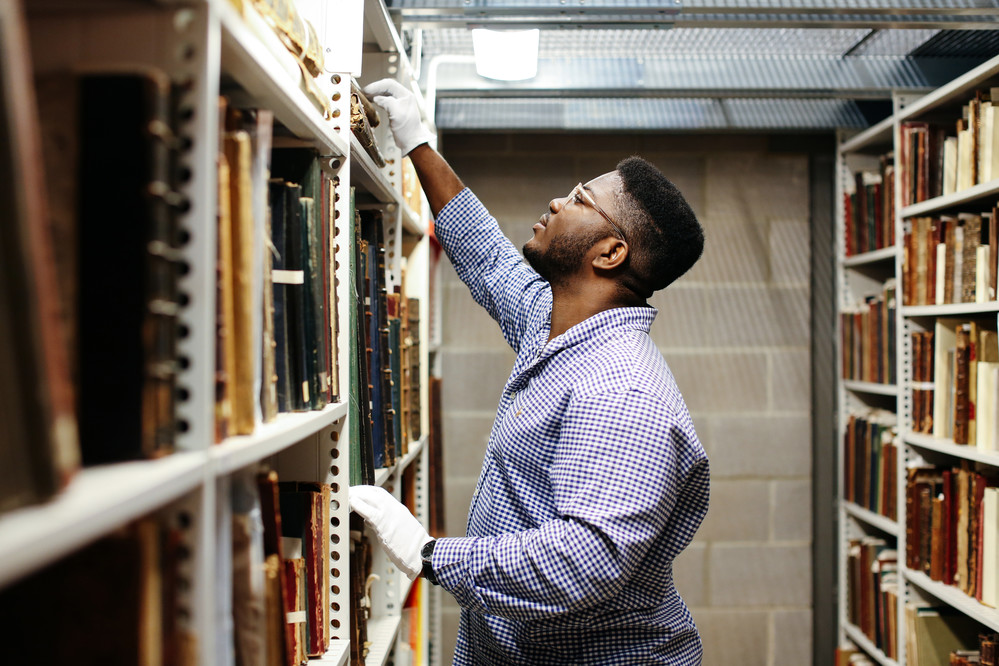One of the very first initiatives from UAL Decolonising Arts Institute was to invite critical decolonial perspectives on collections practice via a new research residency programme. In partnership with UAL Archives and Special Collections team, 4 postdoctoral researchers in residence took up posts on our inaugural Decolonising the Archives programme, starting in January 2020:
Dr Elisa Adami, Dr Khairani Barokka, Dr Mohammad Namazi and Dr Ana Gonzalez Rueda.
Each of the researchers focus on a specific collection, aspect of a collection, or particular materials within the UAL Archives and Special Collections Centre and London College of Communication library; the Central Saint Martins Museum and Study Collection and the Special Collections at Chelsea College of Arts library.
Due to the Covid-19 pandemic the 2020 residency programme was extended to January 2021, and fresh round of proposals has now opened for 2021.
In their own words
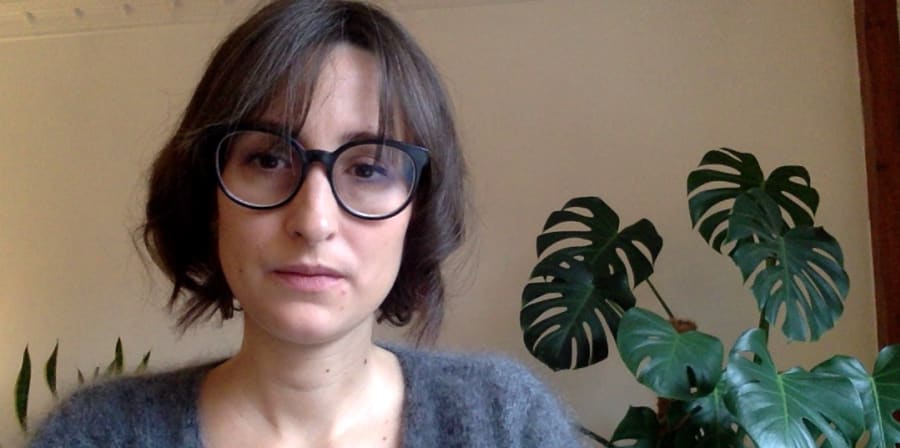
Dr Elisa Adami - Decolonial Dovetailing: Potential Encounters and Archival Elisions in Thorold Dickinson’s Archive
My research focuses on the Thorold Dickinson Archive, held at the UAL’s Archives and Special Collections Centre (ASCC), London College of Communication.
In particular, I am looking at the 1937 London Film Society screening of Dickinson’s ‘Record of War’: a programme that ‘dovetailed’ alternate reels from Italian and Soviet propaganda of the fascist conquest of Ethiopia (then Abyssinia) (1936). It’s an example of anti-war and anti-colonial archival intervention through the juxtaposition of propaganda and counter-propaganda.
This event will be taken to task for the absence of voices connected to the Pan-African movement that actively campaigned against the occupation of Abyssinia (now Ethiopia). The movement was spearheaded in London by figures such as Amy Ashwood Garvey, C.L.R. James and George Padmore.
In Lose your mother (2006), Saidiya Hartman writes: “The archive dictates … the kinds of stories that can be told about the persons catalogued, embalmed and sealed away in box files and folios. To read the archive is to enter a mortuary.” Some corpses are identified by showy tags; others, unmarked, can only be discerned in the folds of someone else’s record.
The Thorold Dickinson Archive occupies about 5 shelves at the UAL’s ASCC. Around 2 dozen grey archival boxes sit alongside Dickinson’s collection of books. What I’m looking for in these records is a connection; a thread that links Dickinson to some of the figures who in the 1930s spearheaded the Pan-African movement in London and vocally staged their opposition to Italy’s illegal invasion of Abyssinia in 1935. Perhaps a newspaper clipping reporting the anti-war rally in Trafalgar Square at which the likes of C.L.R. James and Amy Ashwood Garvey spoke?
How did Dickinson’s anti-colonial consciousness form? Was it, in part, the product of what Priyamvada Gopal has recently termed ‘reverse tutelage’ (2019): a process by which metropolitan dissidents learned from their anti-colonial interlocutors?
Stories in the archives are kept separate, segregated. Black agency often features only as an omission. These archival conditions determine the kind of stories we tell. My aim is to break this archival segregation and put black agency right at the center. The archive will hopefully become the platform for new encounters and dialogues in the present.
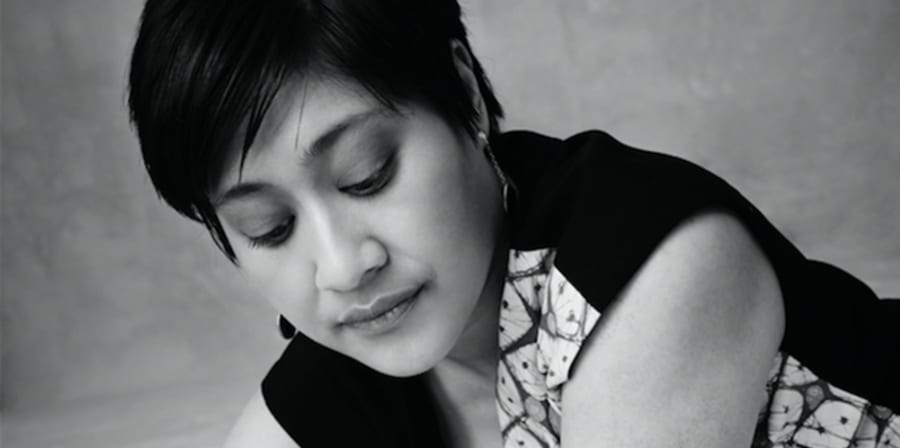
Khairani Barokka - We Were Always Here: Decolonising UAL’s Archives by Cripping
‘We Were Always Here: Decolonising UAL’s Archives by Cripping’ builds on my research into how racialised ableism masks the historical presence of D/deaf and disabled people of colour in art archives, on many levels. The work also points to the urgent political implications of including and problematising the handling of archives chronicling complaints by D/deaf and/or disabled UAL faculty, staff, and students of Asian, African-Caribbean, and African descent.
I am delving into the archives and exhibit spaces of UAL’s campuses, in particular the African-Caribbean, Asian & African Art in Britain Archive: a Special Collection held at Chelsea College of Arts Library. The immense work over many years of the artists archived here tells a potent story of anti-colonial efforts and pushback.
It was fruitful meeting my fellow Researchers in Residence and learning about their projects, sparking potential cross-pollination of ideas. As a practitioner, I found myself noting architectural details and potential spaces for images.
I’ll demonstrate how D/deaf and/or disabled people of colour, especially women and non-binary people, have always already been part of these materials; and show how the archive can be made more accessible. My final work will incorporate creative non-fiction and original artwork in a paper, as well as a performance lecture.
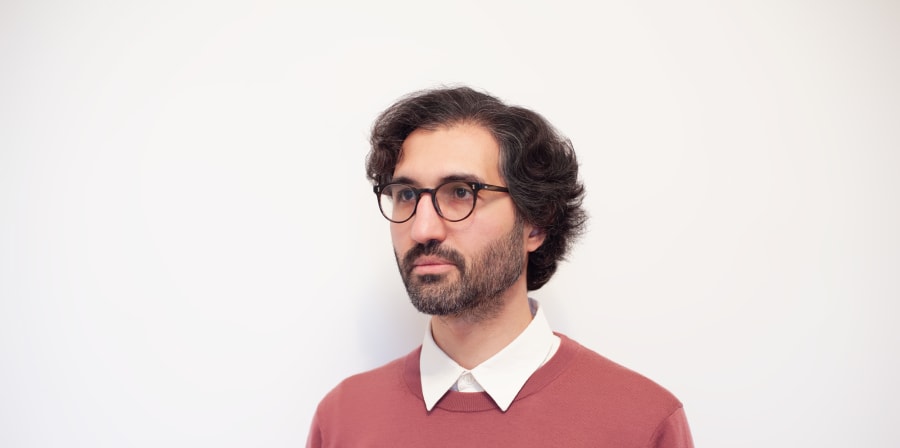
Mohammad Namazi - Listening back to the archives
Taking an expanded notion of colonisation, my research project seeks a path towards the liberation of archival narratives, by focusing on notions of relationality and identity. This is to explore their agency within an archival context.
My research will respond to a number of artworks, focussing mainly on Gorilla Tapes’ Death Valley Days (1984), Black Audio Film Collective’s Handsworth Songs (1986), and I’m British But… (1989) by Gurinder Chadha held in the British Artists’ Film and Video Collection. Additionally, through Mitra Tabrizian’s photography series ‘Borders’, the notion of home as a state of in-between has been explored. Reflecting on my ethnocultural experience as an artist and researcher living in the UK, I will explore Derrida’s notion of the ‘stranger’ and act as a creative interloper in the archive.
I will re-imagine the archive as a network for distributing knowledge, a milieu of relations, inter-connected voices, and activities that have the capacity for active interaction with my current time. Through the principle of relationality among archival objects, conversations with practitioners and scholars, in addition to considering my lived experience in the UK as an Iranian within an ethnocultural minority; I will research towards aspects of archival decolonisation.
I am pleased to be part of a progressive, radical and dynamic group–pursuing institutional change in this context. I was curious to engage with a wide range of materials in the UAL archives, including prints, artefacts, films, sound and net-based art. The project will result in a written essay, and production of artworks including, an artists’ book, a series of web-pages and prints, which will be introduced into the archive as a decolonial strategy.
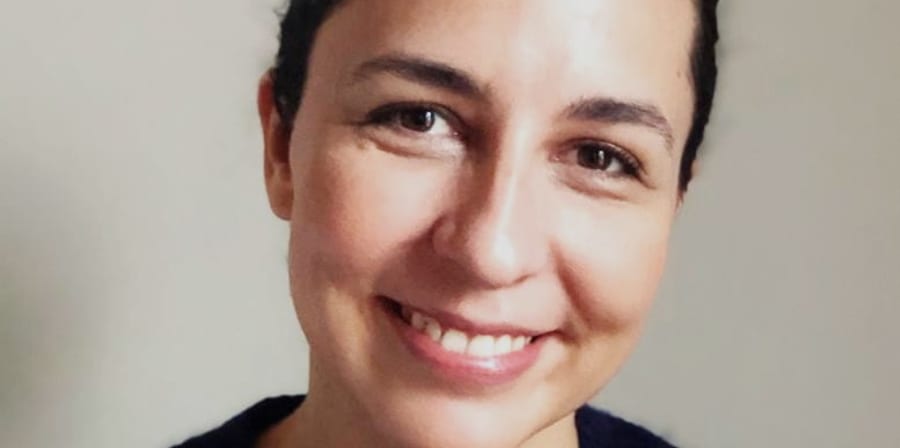
Ana S González Rueda - Disorienting the gaze: Ngozi Onwurah's early films
I’m working with Central Saint Martins’ British Artists’ Film and Video Study Collection and have chosen to concentrate on Ngozi Onwurah’s The Body Beautiful (1990). Initially, I was interested in looking into the forms of control that modernity/coloniality exercises on knowledge, the senses, and perception. For instance, I started thinking about how the film complicates the dominant form of perception as a form of appropriation (Vázquez, 2019).
Through a decolonial framework, I will investigate how the artists challenged the forms of control that modernity/coloniality exercises on knowledge, the senses, and perception. I will also adopt intersectionality to consider the erasure and political exclusion of Black women artists.
My project engages with current discussions about decolonising art history. For example, Jennifer Nelson suggests that art history seems to colonise its objects by attaching meaning to them, while Kamini Vellodi proposes prioritising ‘the passage of ideas, in place of knowledge of facts, certainty, specialist mastery, and the settling of ideas’. Thus, my research seeks to treat knowledge as a creative, ‘pliable’ project (Salami, 2020).
I’m currently organising a film and reading group that explores bell hooks’ conception of conversation as a place of learning. hooks’ pedagogical approach acknowledges and values everyone’s presence; it deconstructs the traditional understanding of the teacher being solely responsible for the classroom dynamics and creates excitement through collective effort. The idea is to facilitate ways of looking and knowing that go ‘against the grain’.
This study also adopts intersectionality as an ‘analytic sensibility’. I’m particularly interested in political theorist Anna Carastathis’s interpretation of intersectionality as a ‘provisional concept’ which disorients entrenched cognitive and perceptual habits, encourages both/and thinking, and indicates the work still to be done. My analysis of Onwurah’s film is guided by this theoretical framework.
The residency’s research-sharing seminars provide an opportunity to introduce a decolonial pedagogical approach and reflect on the ‘with whom’ and ‘what for’ of the project (Walsh, 2018). My final output will consist of a series of conversations centred on Ngozi Onwurah’s film, structured in 3x1 hour (closed) meetings, each with accompanying reading.
I was thrilled to learn about my fellow researchers’ projects. While each of us proposes a distinct approach to the archives, it will be fascinating to see how our findings intersect. For example, Mohammad Namazi’s idea of exploring intercultural values, Elisa Adami’s aim of pointing to ‘blind spots and silences’, and Khairani Barokka’s interest in making the archive more ‘accessible to as many kinds of bodyminds as possible’ are closely related to my concern to deal with art historical amnesia.
